This story was originally published May 20, 2016, on CBCMusic.ca
On May 21, Marvin Gaye’s album What’s Going On turns 45. Gaye was never able to celebrate this milestone, as he was killed by his father a day before his 45th birthday. Today is the last day when both the album and the man share the same age.
There’s no doubt that What’s Going On will be listened to by many generations to come. We’ll celebrate its 50th anniversary, analysing its seemingly timeless portraits of urban struggle and socio-economic desperation. We’ll champion its 60th birthday, with its message about the destruction of our environment still ringing true. In 100 years we’ll look back on the record as an album that broke down musical barriers and united music fans around the world.
Today, though, let’s take a closer look at the making of Gaye’s masterpiece as the album reaches its mid-life surrounded by a world still in crisis. Here are 45 things you may not know about Gaye’s What’s Going On.
1. The boss at Motown thought Gaye was jeopardizing his career with this album
In the fall of 1970, Gaye was so excited about the protest album he had in mind — and the song “What’s Going On” that he’d just finished — that he tracked down the head of Motown records, Berry Gordy, who was on vacation in the Bahamas, to tell him the idea. In response, Gordy said, “Marvin, why do you want to ruin your career?”
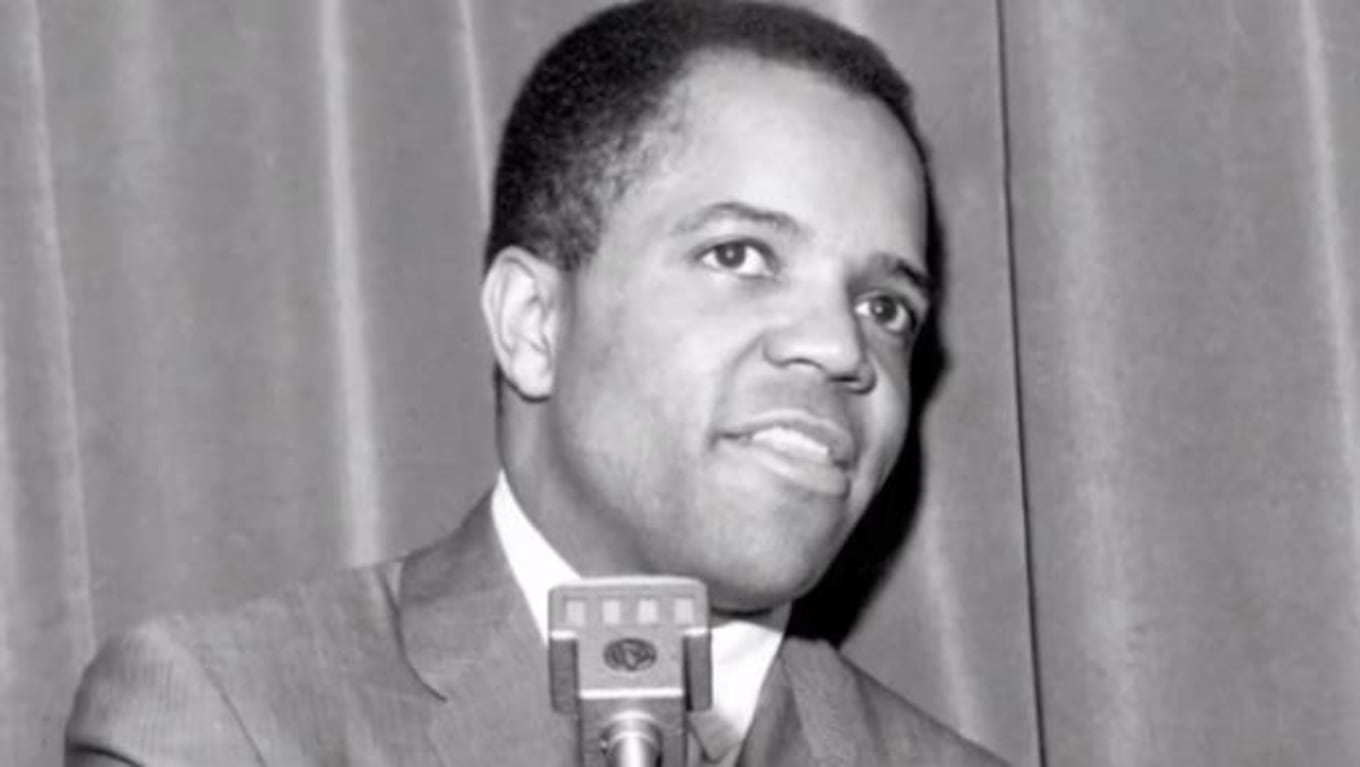
2. The fastest-selling single in Motown history had to be released in secret
Motown boss Gordy and his quality control panel at Motown were against What’s Going On from the beginning. One man, Harry Balk, is responsible for the album ever seeing the light of day. One day Balk, an executive in the creative department, received an acetate pressing of “What’s Going On” by mistake, while it was on its way to be heard by Motown’s quality control department. Balk fell in love with the song and was deeply disappointed when the company's ears said no to the track. The only other person at Motown who loved the song as much as Balk was Stevie Wonder!
Balk tried pitching the song straight to Gordy, who still said no. With “What’s Going On” waiting in the wings, Gaye refused to record another note for the company until it released the song. Desperate for work from Gaye, Balk spoke to quality control behind the boss’s back.
Without Gordy’s knowledge, Barney Ales, vice president of sales, commissioned a pressing of the 100,000 copies of the single. The song was sent out to radio stations on Jan. 17, 1971. DJs and the public loved it. Motown sold all 100,000 copies of the song on Jan. 21, the official release day, and already had orders for 100,000 more copies. It became the fastest-selling single in Motown history, all thanks to the determination of company man Harry Balk.

3. The album was Motown's biggest commercial success
The album stayed on the charts for a whole year, peaking at number 1 on the R&B chart and number 6 on the pop chart, spawning three hit singles. It was Motown’s biggest-selling album by far. Prior to What’s Going On, the company’s biggest success had also been by Gaye: “I Heard it Through the Grapevine.” Motown had just as little faith in that first hit as it did in “What’s Going On.” The public again proved Motown brass wrong, buying “Grapevine” and making it Hitsville’s biggest hit single.
4. Betting on 30 days of What’s Going On
After Gordy had been proven wrong about the success of the single “What’s Going On,” he drove to Gaye’s house to ask for a full album for What’s Going On. This irked Gaye, because Gordy had actively tried to stop the song from being released.
But Gordy knew that one sure-fire way to get music out of Gaye was to make a bet with the singer. So the two men bet an undisclosed amount on whether Gaye could deliver a full album to Motown in just 30 days.
Recording sessions ran from March 17 to 30, 1971. They often lasted 12 hours just to nail the vocals for one song. Sessions began at midnight and ended at dawn. Mixes were done, then re-mixed. The master tapes were flown across the continent and back. Gaye flew across the country to fulfill an acting commitment, all the while constantly adding to the songs, even until the last moments before the final mix. He delivered the album just under the wire — 30 days from start to finish, winning the bet with Gordy.

5. ‘What’s Going On’ almost became a Four Tops song
It was originally conceived by Renaldo “Obie” Benson of the Four Tops. On May 15, 1969, the band was on a tour stop in San Francisco when Benson witnessed a violent confrontation concerning People’s Park between young protesters and Berkeley police. Kids in America were being sent overseas to fight in Vietnam and kids were being beaten by the cops back at home. Benson wanted to know, in his words, “What the f--k is going on?” He pitched the song to his bandmates in the Four Tops, and they rejected it as too political — and too folky!
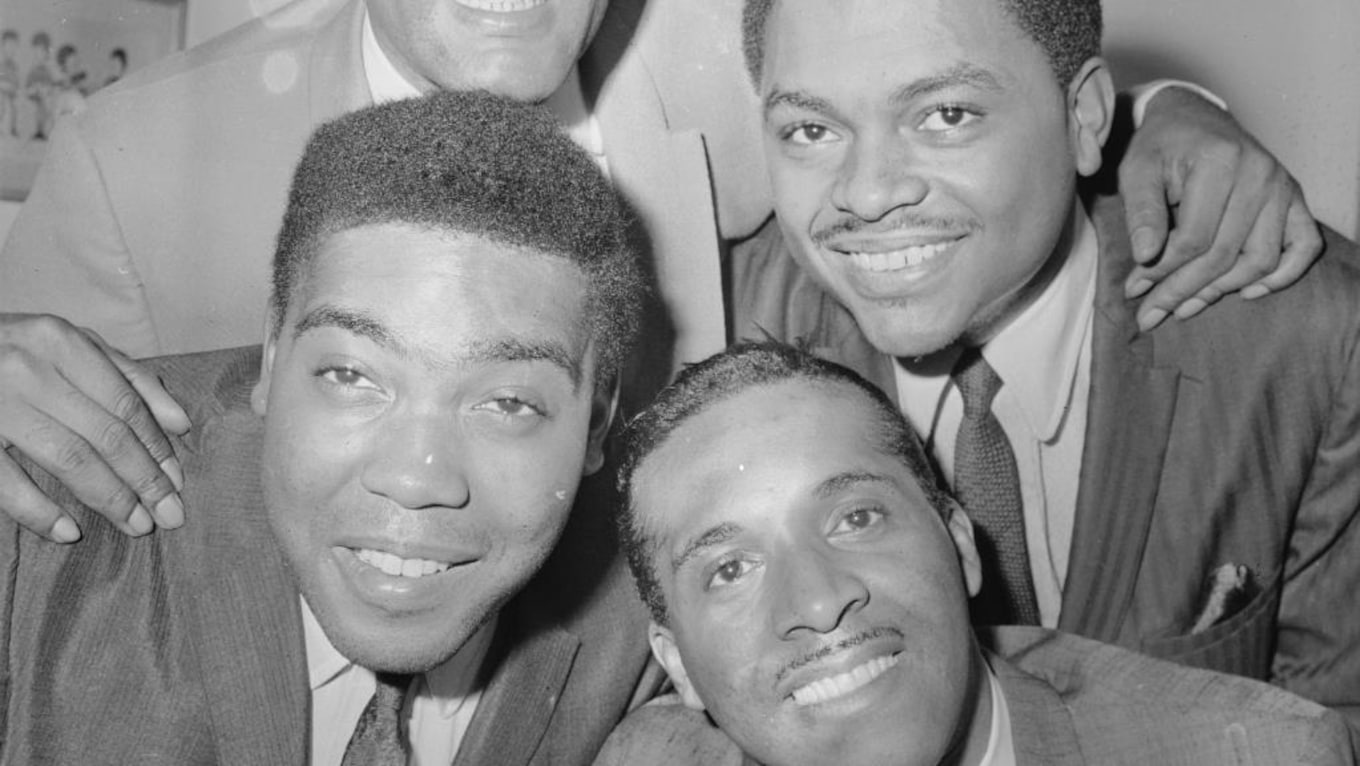
6. ‘What’s Going On’ almost became a Joan Baez song
The Four Tops were on tour in the U.K. and due to appear on the British TV show Top of the Pops. Before the taping, Benson got to chatting with a folk singer playing on the show: Joan Baez. After the Tops had rejected his protest song, Benson thought it might work for Baez. He tried to play “What’s Going On?” for Baez in her dressing room, but she didn’t go for it.
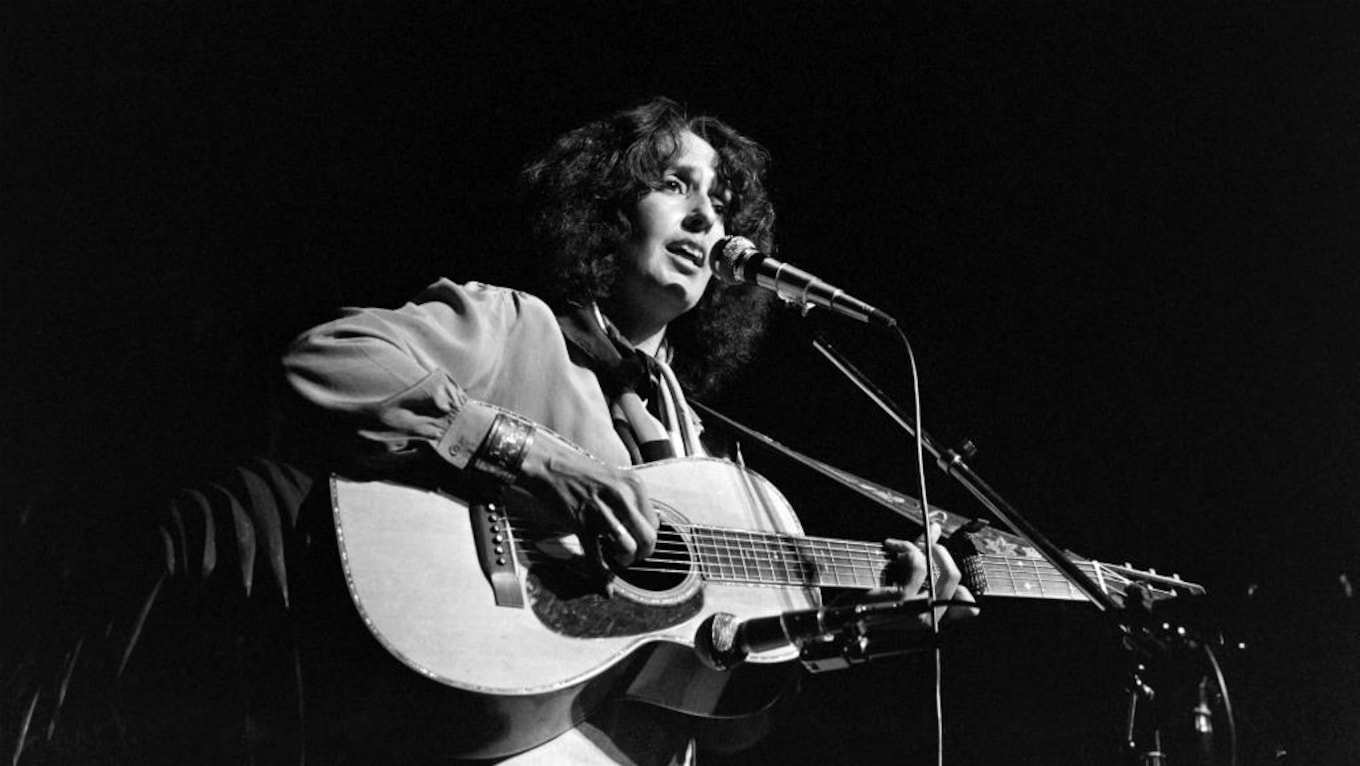
7. ‘What’s Going On’ almost became a song for vocal group the Originals
In mid-1970, after working on the song with lyricist Al Cleveland, Benson finally had a chance to play it for Gaye after tracking him down on a golf course. Gaye loved the song but didn’t hear it for himself — he wanted to cut the track with a vocal group he was producing called the Originals. But Benson refused to give Gaye the song unless he sang it. He was so convinced Marvin was the man for the song that Benson offered up a percentage of the songwriting credit to Gaye. Gaye’s wife, Anna, helped seal the deal telling Marvin, "This is a perfect song for you.” Benson has said he’ll love Anna Gordy forever for helping Gaye see the truth. Gaye tweaked the lyrics, and the rest is history. “We measured him for the suit and he tailored the hell out of it,” Benson has said, of giving the song to Gaye.
8. What’s Going On was a statement, not a question
The question mark Benson had originally fixed to the album’s title track was deliberately removed by Gaye. What’s Going On, the album, is a statement rather than a question, a challenge to Motown to deal with the reality of the early 1970s. The album was a presentation of what’s going on in the world today.
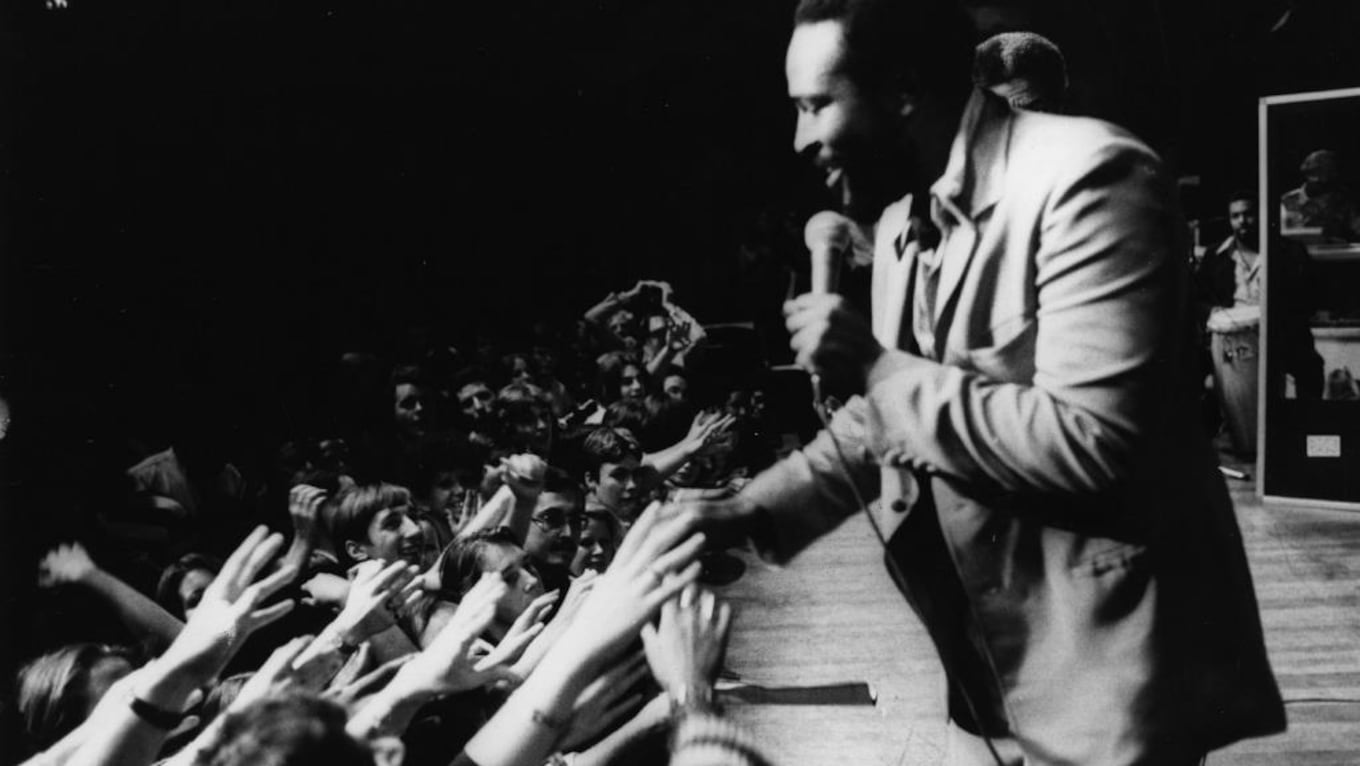
9. The album ushered in a new look for Gaye
To separate himself from the finishing-school look of other Motown artists, Gaye changed his image while recording this album. He grew a beard, wore casual attire like hoodies, denim and funky tracksuits, even though the album artwork sees him wearing a tailored suit.
10. Marvin made knit toques a must-have fashion statement
During the recording, Gaye began to wear a series of knit toques. Many of his fans copied his fashion sense, but Gaye later admitted to biographer David Ritz that he wore them to cover up a growing bald spot on the top of his head, and was tickled to see people wear them to look cool.
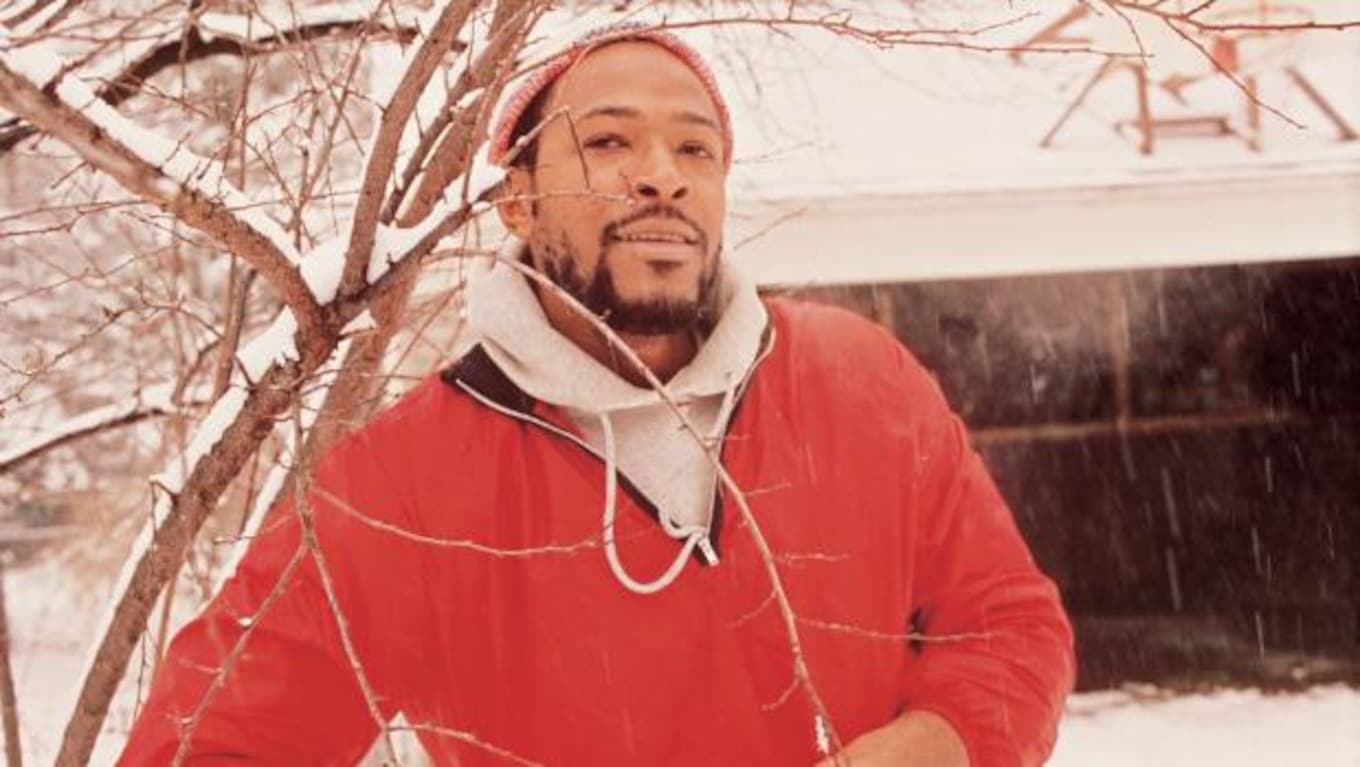
11. 10 days in the Snakepit
The album’s rhythm tracks were recorded over 10 days in the Snakepit, the loving nickname of Motown’s Studio A, so named because it was in a basement with lots of recording wires coming from the ceiling. Unlike most producers, Gaye sat down in the Snakepit with the musicians, leading the rhythm section and playing piano instead of producing from behind the glass in the booth.

12. Gaye’s last-minute mixing
Gaye mixed the album in Detroit with engineer Steve Smith on April 5, 1971. It was complete and ready to be pressed, but while the album jacket was being printed Gaye had a change of heart. He stole the master tapes and had them flown to the Los Angeles studios of Motown West, where he did a radical, last-minute mix with engineer Lawrence Miles on May 6, 1971, and that is the mix of the album we’ve been listening to for the last 45 years. Below is the Detroit mix of the album's title track. Can you hear the difference?
13. First gatefold album for Motown
What’s Going On was the first gatefold album to be produced by Motown, even though it was a single disc. This was due to the inclusion of a family-photo montage on the inner sleeve with a special emphasis on the children in the Gaye/Gordy family. Gaye insisted on having the photo collage as well as space for lyrics. If you lay the album open next to the Beatles’ Sgt. Pepper, both albums share the exact same layout.
14. The album cover that almost didn't make it
Motown album artwork was generally mediocre, but people could tell What’s Going On was a different kind of record just by its cover art. It featured a striking image: a close-up of Gaye gazing off into the distance, his collar up, rain on his hair and beard. This was one of the last shots that photographer Jim Hendin took. Art supervisor Curtis McNair chose the now-famous shot, but his boss rejected it because he thought you could see too far up Gaye’s nostrils. McNair fought for the photo, and enlisted Gaye’s opinion; Gaye backed McNair’s choice in five seconds flat saying, “This is definitely the cover right here.” And that’s how we got the photo we've been looking at for 45 years.
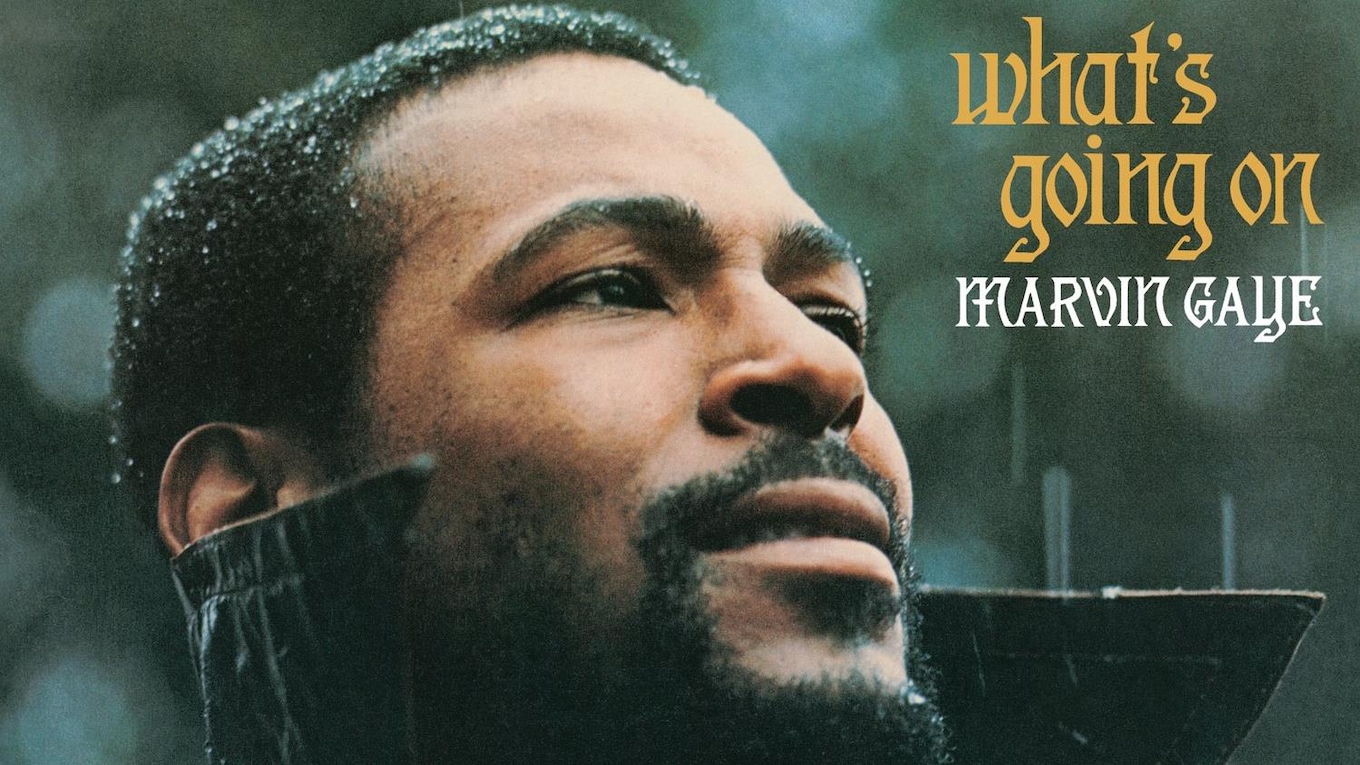
15. The end of ‘The Sound of Young America’
Both the front and rear cover shots for the album were taken in the backyard of the house where Gaye and his wife were living with their son, Marvin III. Gaye was less concerned with the album photo shoot because he’d yet to finished the album, so he quickly stepped out into his backyard to take the pictures. Dressed in a black suit, he slipped into a trench coat to defend himself from the rain and sleet of a March Detroit afternoon, completing his classic look. In the image on the rear of the album, Gaye is surrounded by a swing set and toys piled up against a wall, echoing one of the album’s central songs, “Save the Children.” Most previous Motown album covers also featured the phrase “The Sound of Young America,” but Gaye’s album would not. The picture of Gaye surrounded by abandoned childhood toys in the rain captured the death of innocence. It was a message from Gaye to Motown: time to grow up and take a look at What’s Going On.
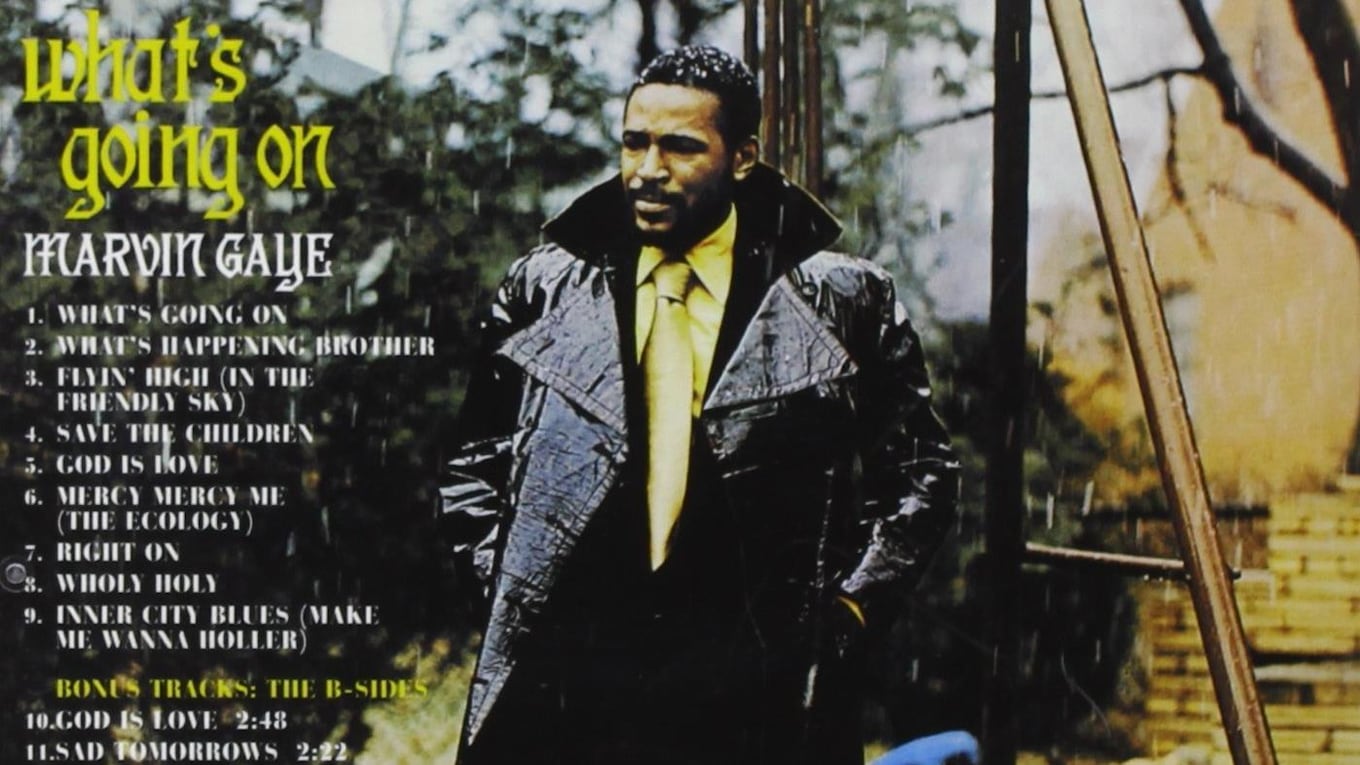
16. Credit where credit’s due
What’s Going On was the first Motown album to feature the names of the people who played on it, including the Detroit Symphony Orchestra’s string section. It was the first record to give recognition to the Funk Brothers, who laid down the rhythm tracks and was the band of musicians largely responsible for the famous Motown sound. It was the beginning of a long road to recognition for these studio musicians.
17. Changing the Motown sound by using only some of the Funk Brothers
The studio musicians were primarily jazz cats playing on the pop hits of Motown to earn their dollars. At night they would play the Detroit jazz clubs to satisfy their musical urges.
Gaye decided he didn’t want this record to have the familiar, straight-up Motown beat, so he didn’t use the usual drummers from the Funk Brothers, instead inviting jazz drummer Chet Forest into the session. Gaye went heavy on percussion players, using Eddie Brown (Gaye’s former valet) and Earl Derouen on congas and bongos, Jack Brokensha on vibes and Jack Ashford on tambourine. The cherry-picking of certain Funk Brothers and not others put a lot of noses out of joint. The sessions were going to be fun, less pop-focused and closer to the freedom of the jazz music they all wanted to play. The album became two seamless suites of music, side 1 and side 2, rather than an album of individual tracks — another Motown first.
18. James Jamerson recorded his bass lines while laying flat on his back
The story goes that Gaye knew he wanted Motown session man and key Funk Brother James Jamerson to play bass on the rhythm tracks. So he tracked Jamerson down to a local Detroit blues club, where the bassist was playing in the band. Gaye coaxed him offstage and back to the studio but Jamerson was so intoxicated he kept falling off his stool during the recording, so he lay flat on his back and laid down the bass riffs that were written out for him by arranger David Van DePitte. The fluidity of Jamerson’s bass playing is often credited to his state during the recording. When he got home from that first recording session for the track “What’s Going On” on June 1, 1970, Jamerson told his wife he’d just finished cutting a classic. He was right.
19. Forgetting to credit the studio engineers
Despite his insistence on giving everyone their dues, the names of the studio engineers were left off the album credits by accident. Gaye simply forgot as he was submitting the credits over the phone, about to board a flight to L.A. Those hardworking engineers were Steve Smith, Ken Sands, Cal Harris, Bob Olhsson, Joe Atkinson James Green, Sam Ross, Lawrence Miles and Art Stewart.
20. Transcribing the lyrics — as sung over the phone
What’s Going On was one of the first Motown albums to publish the lyrics. The album was headed to the printers in Detroit, but Gaye was in L.A shooting a movie so he sang the lyrics over the phone to Georgia Ward, who worked in the A&R department at Motown. Ward was getting a one-audience-member Marvin Gaye concert but says that she was so busy getting the lyrics down correctly that she didn’t have time to enjoy Gaye singing just for her. She included every note he sang, which is why there are so many “la, la, la”s in the printed lyrics.

21. There has only been one full performance of What’s Going On
The only complete, live performance of the album happened almost exactly a year after its release. May 1, 1972, in Washington, D.C., was declared Marvin Gaye Day, complete with a motorcade, speeches at Gaye’s high school, the key to the city and a kiss from Miss Black D.C. The evening was capped off by a Marvin Gaye concert that night at the Kennedy Center. Gaye was a nervous performer at the best of times, but on his namesake day, four years since his last performance, scared, stoned and with a hired band of under-rehearsed musicians, Gaye panicked and accidentally started with "Right On," the album’s first song on the second side, playing the album back to front. The concert was a miraculous success. By popular demand, Gaye played the album’s title track twice.
22. Smoke
This album was the product of many writers, among them Anna Gordy, Obie Benson, Al Cleveland, Elgie Stover, James Nyx and Earl Derouen, but Gaye always claimed there was one writer on the album who didn’t receive an album credit: Smokey Robinson. Gaye was lifelong friends with fellow Motown star Robinson. “Smoke,” Gaye used to tell Robinson, “God is writing this album. God is working through me.” Gaye truly believed What’s Going On was being written by God, his master’s hand.
23. Gaye’s secret method
What’s Going On is an album bereft of sex; full of love but completely without lust. The love is spiritual, deep and available to everyone. In order to get himself into a pure headspace to sing, Gaye would seclude himself in a locked room and masturbate for hours. Free from sexual tension, he’d step to the microphone and let God flow through him and commit his voice to tape, knowing the words he sang were coming from a place of purity.
24. Those vocal loops were a happy accident
Another signature sound on the album was the layering of Gaye’s vocals, his ability to back his own voice and harmonize with himself over and over. This sound was also a product of chance. Gaye had asked engineer Ken Sands to record his lead vocal takes on separate tracks for the song “What’s Going On” so they could be listened back to and compared. The idea was to play them alternately so Gaye could pick a favourite. Sands accidentally played both vocal tracks together and Gaye loved how his double-lead sounded, deciding to keep this unintentional duet. Gaye would use the accidental double-tracking for the rest of the album as well as the rest of his career, creating a trademark Marvin Gaye sound.
25. ‘You goof exquisitely’
The alto-saxophone riff that opens the album was the first and only take. Musician Eli Fontaine was noodling around in the studio, warming up before the session. He signalled to the booth that he was ready for a take, and was instead told to go home. Gaye had been recording Fontaine’s warm-up and heard the riff he needed for the song. Fontaine protested at being sent home, claiming he was just goofing around. Gaye told him through the intercom, “You goof exquisitely” followed by, “Thanks, you’re done.” Gaye decided not to spoil the perfection of the riff by having it appear anywhere else in the song, becoming one of the album’s signature features.
26. A pair of singing lions
A party atmosphere is created at the top of the album with layers of voices. Two of those voices included football stars Mel Farr and Lem Barney, offensive and defensive rookies in 1967 with the Detroit Lions. The three had become close friends, and in 1970 Farr and Barney both helped convince Gaye that “What’s Going On” was the perfect song for him to sing, bolstering the early argument from Obie Benson. Gaye repaid their faith in both him and the song by asking the athletes to contribute vocally on the track. Their voices can be heard in the vocal chatter at the beginning of the song and, even with little vocal talent between them, Gaye asked the pair to sing backing vocals on the whole song. Gaye gave each of the athletes a gold record for their contribution.
27. Musical middle finger
The original mix of ”What’s Going On,” which was released as a single on Jan. 21, 1971, has two main differences to the album mix: it contains none of the vocal chatter at the beginning, and has a false fade at the end. At the stage of the final mix, as the song was petering out, Gaye put his hand on the fader and cranked the volume back up to full. Many saw this as defiance against Berry Gordy, the Motown head honcho who had been less than supportive of Gaye’s new musical direction. The false end was a musical middle finger. Gaye’s sly way of saying, “You think this song you hate is over? Well guess again.”
28. Can you hear a cardboard box buried in the mix?
Buried in the mix of “What’s Going On” you can hear Gaye beating on a cardboard box to accentuate the percussion of the congas and the drumming of big-band tubthumper Chet Forest. Gaye had been a self-taught drummer, and his first gig was playing in the Miracles, fronted by his friend and mentor Smokey Robinson.
29. ‘Father, father, we don’t need to escalate’
The lyric “Father, father, we don’t need to escalate” in “What’s Going On” speaks both to God and Gaye’s own father, Marvin Gay Sr. After a physical conflict with his son years later, Gay Sr. would shoot Gaye Jr. dead, a day before Gaye Jr.’s 45th birthday. With this lyric, Gaye Jr. predicted his future.
30. Once ‘What’s going on’ entered Gaye’s lexicon, it was hard to erase
Gaye began to use the lyric “What’s going on” as a placeholder when he was stuck for words. He improvised the lyric on the 1970 demo of a track called “Symphony.” The track was never released on an album in Gaye’s lifetime, but stands as a sonic picture of Gaye in studio, lost for words.
31. ‘What’s Happening Brother’
The song “What’s Happening Brother” came directly out of a conversation between Gaye and his younger brother, Frankie, who had been to Vietnam and completed a three-year tour of duty. When he returned as a war hero, he struggled to find a job. The song came out of the conversation with Frankie and was partly atonement, as Marvin had never answered the letters his brother sent home from Vietnam. In 1971, he answered them in song.
32. The Marvin Gaye who died in Vietnam
Even though he’d been in the Air Force briefly, the closest Marvin Gaye came to Vietnam was when he played an American G.I in a made-for-TV movie. However Gaye’s cousin, also called Marvin, was killed in Vietnam. In November 1968, the same month “I Heard it Through the Grapevine” was riding high on the charts for Marvin the singer, Marvin the soldier’s body was being flown home. The symbolism wasn’t wasted on the Marvin who survived.
33. Take me out to the ball game
In the song “What’s Happening Brother,” the line, “Will our ball club win the pennant/ do you think they have the chance?“ was completely improvised in the studio by Gaye. It was the kind of question an American G.I returning from war was likely to ask: a question about the everyday, a return to life. The ball club Gaye was singing about was the Detroit Tigers. In 1968 he’d sung the national anthem at Tiger Stadium during game 4 of the World Series. Jackie Robinson was in attendance, and the Tigers took the series from the Cardinals in seven games.
34. Marvin Gaye, the sportsman
In spring 1970, just before the song “What’s Going On” dropped in his lap, Gaye wanted nothing more than to be a professional football player. He was even happy to give up singing. He told his brother Frankie, ”I’d rather catch a pass and score a touchdown in Tiger Stadium than rack up another gold record.” Gaye was kidding himself — he was 31 and trying out for an NFL team without experience — but it didn’t stop him from giving it a shot. He was given a real tryout, though wasn’t invited to the Lions’ training camp. The coach, Joe Schmidt, was worried that one of America’s national treasures would get terribly injured on the field, never sing again and he’d be to blame. The chance just to play a little was enough for Marvin, though. The time away from music, the exercise and discipline readied him for the creative process of making an album like What’s Going On. Later Gaye would try his hand at boxing, coming to recording sessions for What’s Going On with a split lip or bruised jaw.
35. ‘The Curse Out Man’
The songs “Flyin’ High (in the Friendly Sky)” and “God is Love” were written by Gaye, his wife, Anna, and his confidante Elgie Stover, who was nicknamed “the Curse Out Man” at Motown. If the company needed to tear a strip off of someone, they’d send Stover over after a couple of drinks and he’d curse the heck out of them (later in life, he became a caterer for President Bill Clinton). As one of Gaye’s most trusted associates, Stover contributed to the vocal chatter at the beginning of What’s Going On. His voice opens the album: Stover is heard asking, "Hey what's happening?" and adds in the very groovy line a little later in the opening, "Everything is everything."
36. ‘Flyin’ High’
What’s Going On’s third song on side 1 was called “Flyin’ High (in the Friendly Sky).” Its title was a tongue-in-cheek reference to a slogan used in a commercial by United Airlines, “Flying in a friendly sky.” Gaye added the “high.” Literally: the song is about a junkie addicted to heroin. At this point in his career, Gaye was a recreational drug user and not the slave he’d be to his cocaine addiction as the ’70s wore on. Marvin is again prophesying his future with the lyric, “I know, I'm hooked my friend, to the boy, who makes slaves out of men" (“boy” was slang for heroin). The song was originally called “Sad Tomorrows,” mixed and recorded a year earlier and used as the B-side for the single “Mercy Mercy Me (The Ecology).”
37. Hotboxing the percussion room
The laid-back sound of the initial recording session owes a lot to the scotch that was had and the marijuana that was smoked by the musicians, fostering an open and creative vibe. Gaye was a habitual marijuana user; he chain-smoked reefer throughout the session. The two Jacks in the band, percussionists Ashford and Brokensha, did not smoke drugs but the room to the side that housed their percussive instruments was used as a hotbox by the members of the band who did smoke. Everyone got high just breathing the air in studio. There was once a short-lived Motown subsidiary label called Weed Records, and their slogan was “All your favourite artists are on weed.” It didn’t last very long.
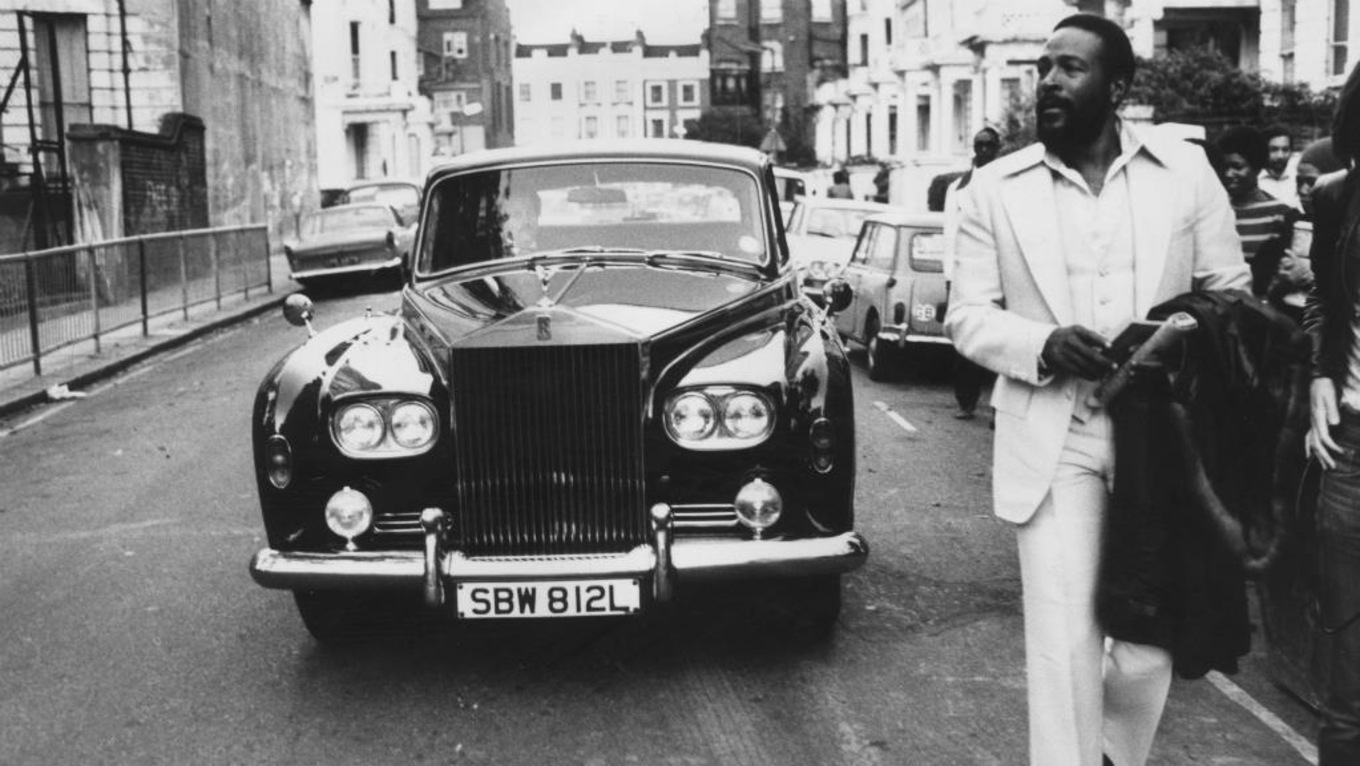
38. ‘Save the Children’
On the track “Flyin’ High (in the Friendly Sky),” one of Gaye’s singing styles dominates: his impassioned falsetto. On the next album track, “Save the Children,” Gaye showcases his two other distinct voices: his macho-man style of singing, used on his early R&B hits, and Gaye the preacher, his reasoned, level-headed spoken-word rational voice (which is the main voice you hear on the track). On this song Gaye becomes the preacher his father had always wanted him to be.
39. God is love
There is a lyric in the song “God is Love” that’s bathed in irony. “Love your mother she bore you/ love your father he works for you.” These lines were an act of retaliation on Gaye’s part, as both Gaye and his mother had always supported his whole family. His father was notoriously work-shy, preferring to drink and brood his days away. He’d been without employment for decades.
40. ‘What the f--k is an ecology?’
Contrary to the myth, Motown boss Berry Gordy never asked, “What the f--k is an ecology?” when presented with the song title “Mercy Mercy Me (the Ecology).” In fact, years before, Gordy had established an offshoot company called Ecology Records with Sammy Davis Jr., so most likely Gordy completely understood the meaning of the word. (But the myth is more fun, right?)

41. What is that sound?
The last thing added to the song “Mercy Mercy Me (the Ecology)” was a piece of equipment Gaye found at the Sound Factory studio: a Mellotron. You can hear it tagged on at the very end. Gaye added this instrument to the master tapes without anyone knowing, not even the engineers. There’s another distinct sound on the song: Jack Ashford played a long, tubular wooden block during the song. With his hand cupped over a hole in the hollow block, Ashford achieved a tremendous echo, a sound Gaye had been searching for. Soon after recording the album, Ashford lost the one-of-a-kind block, meaning this specific echo would exclusively belong to Gaye’s masterpiece.
42. A teenage girl played the flute solo on ‘Right On’
There is a rather prominent flute part on the album track “Right On.” Motown legend tells that it was performed by sax player Thomas “Beans” Bowles, who was called into the studio by Gaye in a scramble in the middle of the night to perform — but the truth is very different. The flute on the song was played by a teenage girl named Dayna Hartwick. She was 13 when she joined Motown, recruited from an amatuer Detroit park band. She was still a teenager when she was called in to play flute for the What’s Going On sessions, and she was the only female musician in the band. Hartwick recorded some flute parts during the day but Gaye called her back to the studio that night to perform a solo on the track — he wanted a jazz sound. Being classically trained, Hartwick had never played jazz but gave it her best try. After the session, she was so unhappy with her playing that she didn’t listen to the track until years later, when a friend asked about it. She was pleasantly surprised when she finally played it back.
43. From ‘Holy Holy’ to ‘Wholy Holy’
Until right before the album’s release, the song “Wholy Holy” was called “Holy Holy.” Gaye, a huge fan of wordplay, found great pleasure in altering the song’s meaning with a simple “W.” The song is the spiritual heart of the album’s second side, featuring beautiful string arrangements by David Van DePitte performed by the string section of the Detroit Symphony Orchestra. Van DePitte arrangements permeate the whole album and gave it such a distinct sound. Van DePitte’s contribution to the album was such that he was given credit on the album cover, a first in Motown history. He was Nelson Riddle to Gaye's Sinatra. The two would work together on Gaye’s seductive suite of songs Let’s Get it On.
44. Neglected jewels in the Motown crown
Gaye had a knack for surrounding himself with talented, under-appreciated people. One of them was James Nyx, an elderly, impeccably dressed gentleman who ran the elevator in one of Motown’s buildings. Nyx was always handing out ideas for songs or sheets of lyrics he’d written. Most people were polite, though never took him seriously. But Gaye started to look at the man’s lyrics more closely. He used some of them in “What’s Happening Brother” and “God is Love,” and leaned on Nyx for further ideas. Nyx gave Gaye the song title for the album's last track: it had been referred to as “The Tail End” until Nyx suggested the title “Inner City Blues.” Nyx was given full credit for his contributions.
Another neglected jewel in the Motown crown was Wild Bill Moore, a sax player. Most of the Motown producers found his “growling” sax style out of date, but in a late-night session Gaye paid Wild Bill $500 out of his own pocket to play his tenor sax across the whole album. The two men smoked a joint together, then Wild Bill Moore cut loose and played his heart out. Gaye kept much of what he played, and you can hear Wild Bill’s contribution most strongly on the sax solo in “Mercy Mercy Me.”
45. Out of date but 'Right On' time?
The ideas around What’s Going On were conceived in 1969 and the single recorded in 1970, but by the time the record was released in May 1971, the slang and references on it were out of date. Hippies with long hair, picket lines, protest signs and slang like “Right On” and “What’s happening brother” were almost clichés. Gaye’s next project would carry on his political vision. The 1972 song “You’re the Man” was more in touch with the times, critiquing those running for president in the ’72 election and a call to people to use their votes wisely, as well as a call to those running to earn those votes fairly. Unlike “What’s Going On,” though, the song had only mild success. It was of the time but failed to inspire fans the same way. Gaye shelved his intended “You’re the Man” album and left politics to the politicians.
Sources: 1. What’s Going On? Marvin Gaye and the Last Days of the Motown Sound (Ben Edmonds); 2. After the Dance: My Life With Marvin Gaye (Jan Gaye and David Ritz); 3. Divided Soul: the Life of Marvin Gaye (David Ritz); 3. Trouble Man: the Life and Death of Marvin Gaye (Steve Turner); 4. Mercy Mercy Me: the Art Loves and Demons of Marvin Gaye (Michael Eric Dyson); 5. Standing in the Shadows of Motown (documentary film); 6. Standing in the Shadows of Motown: the Life and Music of Legendary Bassist James Jamerson (Dr. Licks).

